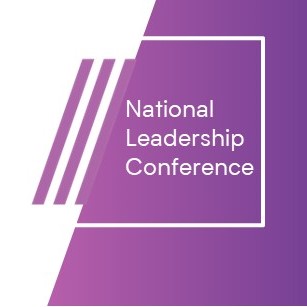Laurence Knell: Making innovation and collaboration stick in a hybrid world
By Laurence Knell | 23rd June 2021
Leaders must be role models of new practices to reap the full benefits of the redefined way of working, writes Laurence Knell.
The importance of collaboration for innovation has long been recognised. Leading thinkers in the field of innovation, including Teresa Amabile, Linda Hill and David Cropley, have all emphasised the role that more effective collaboration plays in supporting greater levels of team and organisational creativity and innovation.
Yet what does the future hold for collaboration and innovation, particularly in a world defined by more remote and hybrid working?
Although many organisations had been moving toward agile ways of working for some time, a natural consequence of the Covid-19 pandemic was a rapid shift to remote working. In one fell swoop office blocks and business districts were emptied as workers rushed to set up home offices and leaders sought to establish ground rules for new ways of working and collaborating. While this situation might not have been ideal, we all accepted that it was necessary and made the most of it – choosing in many cases to “satisfice” for now and figure it all out later.
As the world starts to “re-open”, however, leaders are grappling with a whole new set of challenges. Already some leading global business powers have put down a marker on how they will approach things in a post-Covid world. Companies like Facebook have announced that not only will they allow their employees to work from home permanently if they wish, but also give flexibility of location. On the other hand, companies like JP Morgan have insisted that all staff should be back in the office as soon as local Covid restrictions allow.
The reality for most companies is that hybrid working will be a necessary aspect of the future. The 2021 Microsoft Work Trend Survey carried out across 31 countries found that 73% of employees surveyed want flexible remote work options to stay post-pandemic.
At the same time, 67% of employees indicated that they wanted more in-person work or collaboration options once the pandemic has passed. Is this contradictory? Perhaps, but what it highlights is that the future of work will be flexible, accommodating and will support the basic human need for interaction and engagement.
Given that the roadmap for innovation and collaboration in a post-pandemic, hybrid-working world has not yet been defined, what can leaders do to better support their teams?
Writing in MIT Sloan Management Review, Leigh Thompson highlights that far from being the kiss of death for innovation, hybrid working can provide unique benefits. For this to happen, Thompson argues, leaders must promote numerous critical practices. These can include managing team dynamics to minimise conformity and in-group/out-group bias; practising alternative creativity techniques such as brainwriting instead of brainstorming, and fostering diverse interactions with others, both within the team and outside the team and organisation.
And it is perhaps these diverse interactions that offer the most opportunity for innovation to take root and blossom.
One of the world’s top economists, Professor John Quiggin from the University of Queensland, has argued that the pandemic has brought about new ways of collaboration that are innately beneficial to creativity and innovation. Where once attending a conference or trade show and learning about the latest breakthroughs or developments in a field might have meant multiple flights and days away from the office, technology now means that an event or keynote in Tokyo or Sydney is just as accessible as one in Dublin or Cork.
These same technologies also allow organisations to take full advantage of organisational diversity in various forms. When forming teams, leaders are now able to integrate diverse and minority voices in ways that were not possible before. As Cass Sunstein and Reid Hastie assert in their remarkable book on team decision making, Wiser:
“One of the particular advantages of diversity and dissent is that they promote two things that institutions need: creativity and innovation. When minority voices are heard, well-functioning groups are likely to be jolted out of their routines, and fresh solutions, even a high degree of innovation, can follow. When dissent and diversity are present and levels of participation are high, groups are likely to do a lot better.” (Sunstein and Hastie, 2015, p.104)
While hybrid working may not be easy at first, the opportunities to enhance creativity and innovation are enormous and should be embraced by leaders at all levels.
Laurence Knell is an IMI Associate and is a programme faculty member on Leading Strategy Execution as part of IMI’s Executive Series offering. He is the Director of Strategic Innovation Partners.
For more IMI Insights, go here.
Sources:
-
Amabile, T.M. (2013) Componential Theory of Creativity, in: Kessler, E.H. (Ed.), Encyclopedia of Management Theory, Sage Publications, London, 134-139.
-
Cook, G. (2014). How to manage a creative organization. Scientific American. [21st October]. Available at: https://www.scientificamerican.com/article/how-to-manage-a-creative-organization/ (Accessed 22nd June, 2021).
-
Thompson, L. (2021). Virtual collaboration won’t be the death of creativity. MIT Sloan Management Review, 62(2), 42-46. Retrieved from https://elib.tcd.ie/login?url=https://www-proquest-com.elib.tcd.ie/scholarly-journals/virtual-collaboration-wont-be-death-creativity/docview/2479113317/se-2?accountid=14404
-
Sunstein, C. R. and Hastie, R. (2015) Wiser: Getting beyond groupthink to make groups smarter, Cambridge, MA, Harvard Business Press.








